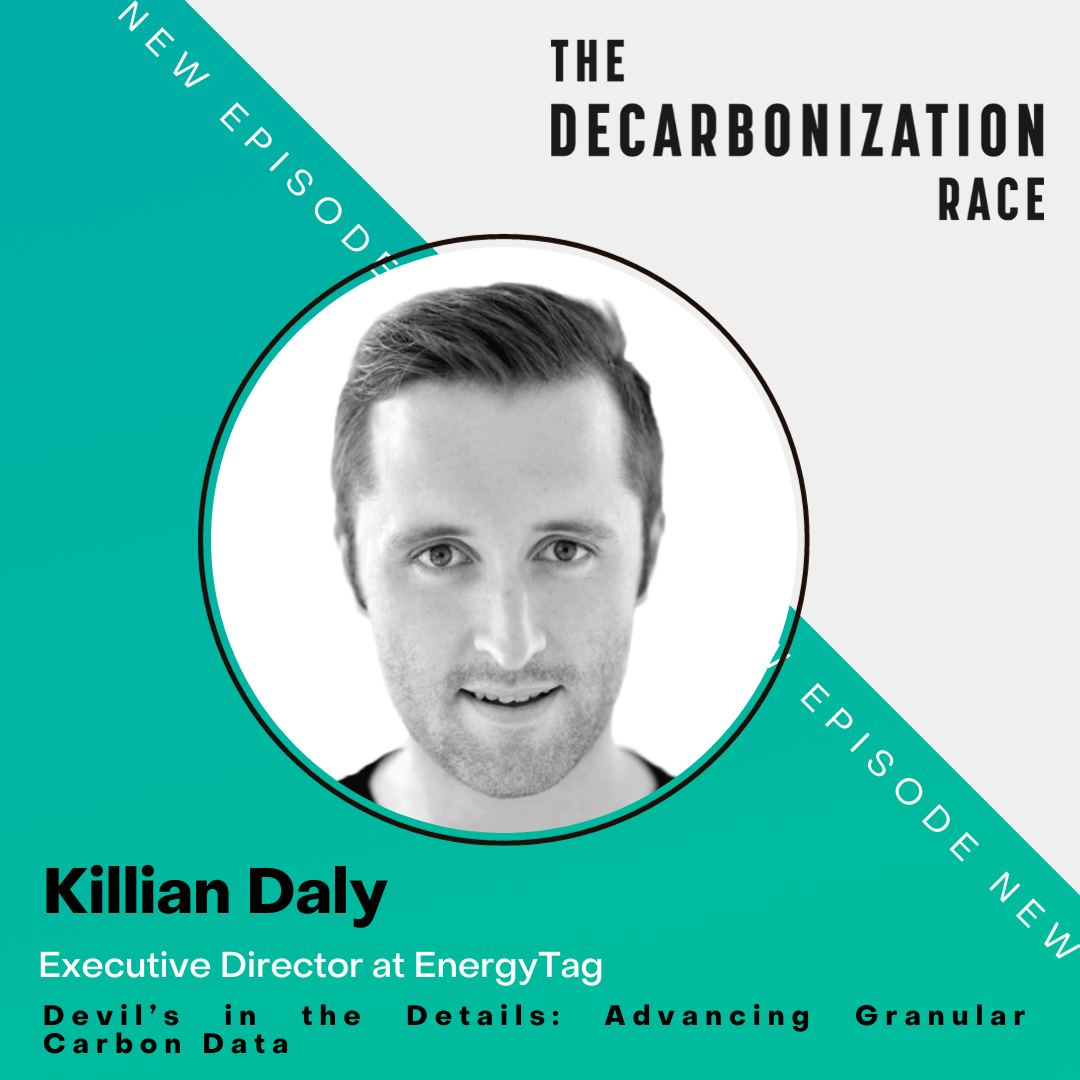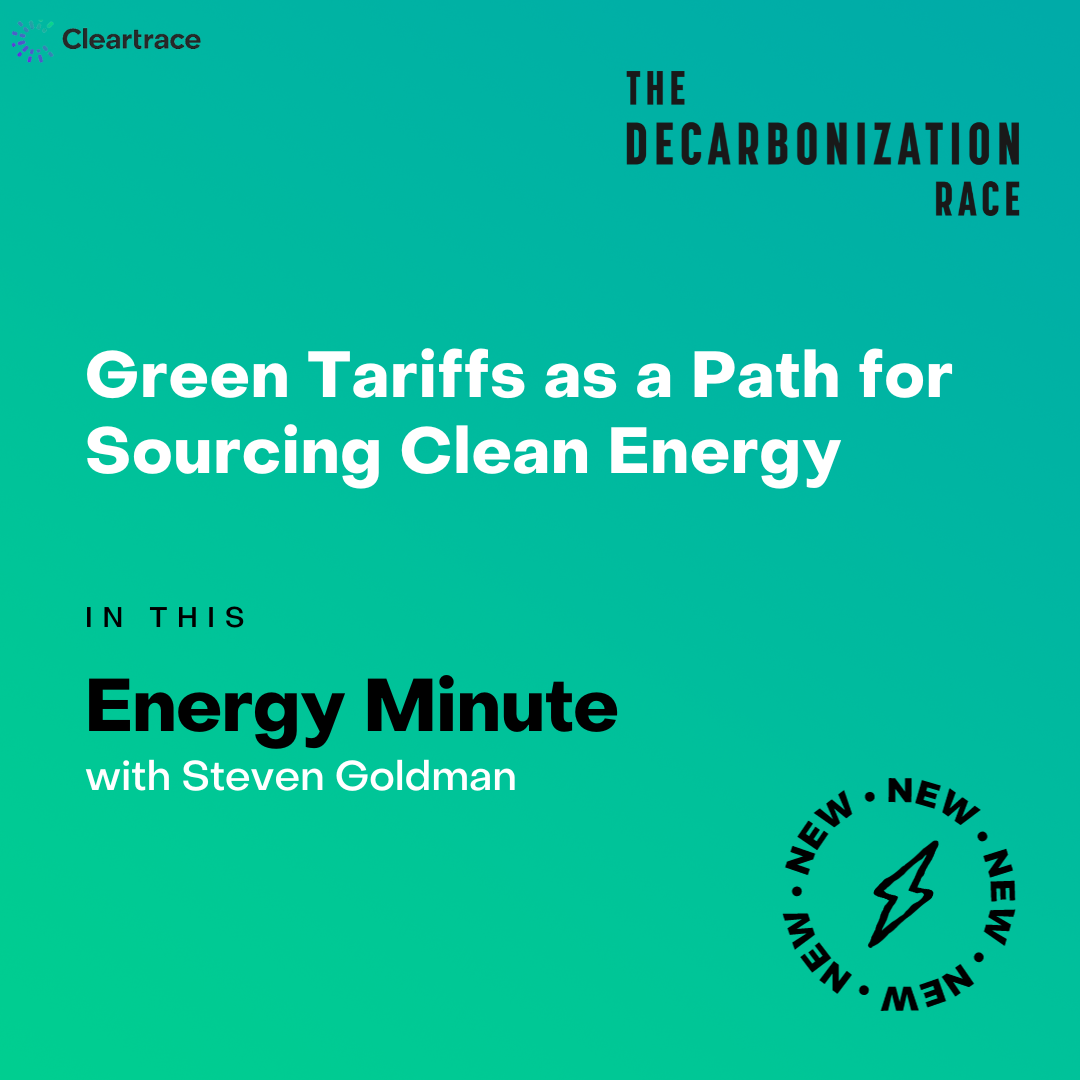Energy Minute: How The Emissions First Partnership is Putting Emissionality Front & Center
Following a riveting conversation with Killian Daly of EnergyTag about hourly matching in carbon accounting, this Energy Minute looks at the work of the Emissions First partnership - a group of companies including Akamai, Meta, General Motors and Salesforce - and its collective focus on carbon matching in clean energy procurement. In this episode, Cleartrace’s Steven Goldman delves into the difference between hourly matching and carbon matching approaches, and what principles the partnership members are applying in their work. He also explores the evolution from traditional electricity purchasing strategies and discusses how aligning with this approach might boost companies' carbon impacts of their energy procurement.

Following a riveting conversation with Killian Daly of EnergyTag about hourly matching in carbon accounting, this Energy Minute looks at the work of the Emissions First partnership – a group of companies including Akamai, Meta, General Motors and Salesforce – and its collective focus on carbon matching in clean energy procurement.
Cleartrace’s Steven Goldman delves into the difference between hourly matching and carbon matching approaches, and what principles the partnership members are applying in their work. He also explores the evolution from traditional electricity purchasing strategies and discusses how aligning with this approach might boost companies’ carbon impacts of their energy procurement.
Key Takeaways
- The Emissions First partnership seeks to maximize greenhouse gas emission reductions from the electricity system through corporate action. This includes prioritizing decarbonization, valuing grid decarbonization progress, incentivizing innovation in the emissions data ecosystem, and implementing accounting governance.
- The coalition aims to source energy based on emissionality, focusing on the marginal carbon impact of each procurement rather than matching based on timing or which grid or market the energy is sourced in. Instead, they encourage companies to schedule electric loads around system signals like high marginal greenhouse gas emissions.
- This approach signifies an evolution from traditional electricity purchasing strategies based on price or annual matching while providing flexibility for energy procurement teams to source for the greatest – while still feasible – marginal carbon impact.
Resources
- Emissions First Partnership: https://www.emissionsfirst.com/
Transcript
Steven Goldman: In last week’s episode of the decarbonization race, we spoke with Killian Daly, executive director of EnergyTag, about a key approach that companies working to decarbonize are taking in their clean energy procurement. Hourly carbon accounting, typically used for 24/7 carbon-free energy goals. By matching energy sourced in the same timeframe as energy consumed, companies can be confident that the energy they’re sourcing is serving as a counterbalance to the energy they’re drawing locally from the grid in that moment.
On this Energy Minute, we’re looking at the work of the Emissions First Partnership and their focus on carbon matching, decarbonizing through efforts that maximize short-term emissions impacts, regardless of their timing. Let’s dive in.
The Emissions First Partnership was launched in late 2022, with a membership made up of some of the world’s largest technology companies, As well as drawn from other industries, like electric vehicles, food and beverages, and e commerce, names like Amazon, Rivian, General Motors, Meta, and Salesforce. The Emissions First partnership is focusing their respective decarbonization and clean energy efforts along a set of principles, a practitioner led perspective on how to maximize greenhouse gas emission reductions from the electricity system through corporate action.
Why this focus? Well, as you’ve heard us discuss on the podcast in a range of ways, many companies start their decarbonization journey with annual purchasing of RECs and or energy, but on a megawatt-hour basis, without necessarily focusing efforts on when or where those purchases are taking place.
So what are the core principles put forward by the coalition? Simply put, it breaks down into four areas: prioritizing decarbonization; valuing grid decarbonization progress; incentivizing innovation in the emissions data ecosystem; and accounting governance. Let’s take each of those one at a time.
Prioritizing decarbonization, simply put, means getting beyond that annual purchasing approach I mentioned, to recognize that the impact of every megawatt-hour of energy purchased varies depending on when and where it was purchased. If it was purchased at a cheap price, but at a time when solar or wind farms are putting out excessive amounts of energy compared to demand, then the impact is less than if those solar panels or wind turbines were generating power to displace the output of fossil fuel-powered plants operating in the same area. The coalition wants to focus on sourcing energy based on emissionality, trying to maximize how much carbon impact is delivered by each megawatt hour of energy sourced. This means focusing on the marginal carbon impact of each procurement, rather than being concerned about which grid or market energy is procured from.
Valuing grid decarbonization progress means taking into account both the procured energy and the energy that would be drawn from the grid when quantifying carbon impacts.
Incentivizing innovation in the emissions data ecosystem refers to favoring continual improvements in data quality and availability and embracing transparency and 3rd-party verification in maintaining data integrity and accuracy.
Lastly, the partnership is focused on carbon accounting governance, and that takes a couple of different forms. First, the companies involved want to ensure that as measurement complexity increases, that data capture and reporting doesn’t grow so complex that organizations just stop reporting. Second, they’re focusing on avoiding penalizing procurements that are already in motion under current guidance. Now, that’s arguably the most important of their focus areas, because doing that could jeopardize planned capacity, and it could curb future development efforts. In addition, the coalition is pushing to apply principles to all forms of electricity generation, not simply renewable energy procurement, to better reflect the markets in which companies are managing their procurement.
At the end of the day, what does this group of companies consider, “impactful projects?”
Simply put, they’re focusing on citing new energy procurement in locations with electricity grids that have high greenhouse gas emissions rates, encouraging the dispatch of energy storage at times with high electric grid system, greenhouse gas emissions, and scheduling company electric loads around system signals like high marginal greenhouse gas emissions.
All in all, it’s a really different balance and a significant evolution from electricity purchasing strategies to date. But aligning with this approach holds great promise to boost companies carbon impacts through the energy they procure.
Thanks again for joining us on this Energy Minute on the Decarbonization Race podcast. For more of the latest sustainability and clean energy insights, visit us at cleartrace.io.



